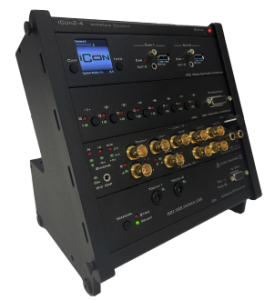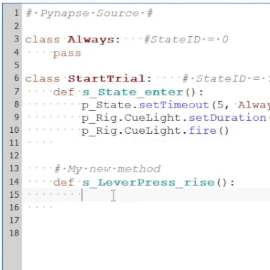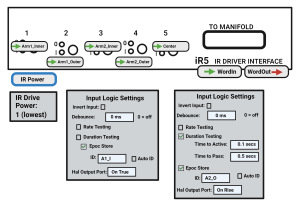iRn – Infared Beam Interface Modules
The iRn (iR5, iR10) modules provide a simple way to detect animal placement in real time. The power comes from an IR LED and detector pair, controlled through the iRn, which users place across the region of interest. An event is triggered when a beam break is detected.
The system works in all behavioral boxes, mazes, and free-field environments, such as a raised platform.
The iRn module has 5 or 10 pairs of IR LEDs and detectors, giving you full flexibility to fit them to your experiment:
- Dial in the correct power to provide a constant beam source for beam break detection.
- Add two pairs in succession to detect the placement and orientation of the subject.
The iR5
The iR10




 Run time control of cue lights, feeders, and your other behavioral devices
Run time control of cue lights, feeders, and your other behavioral devices
